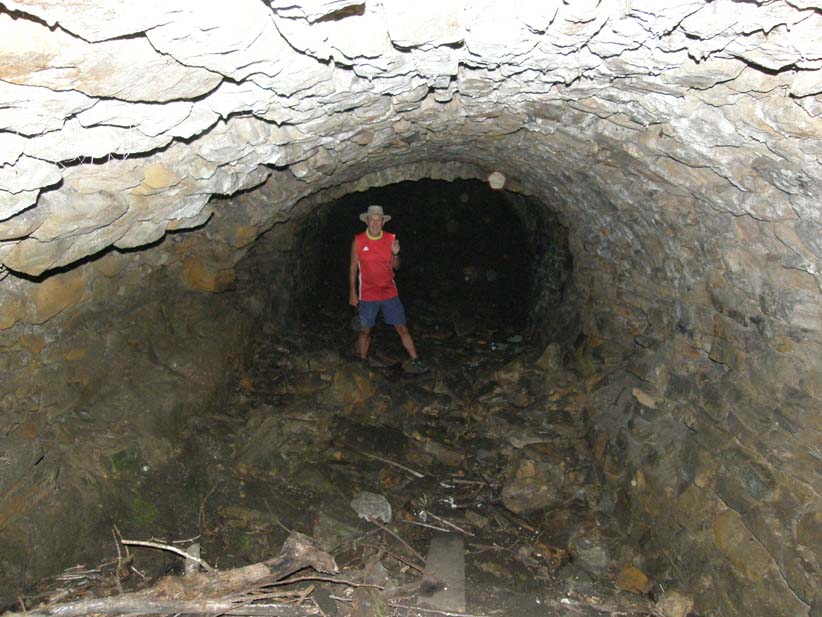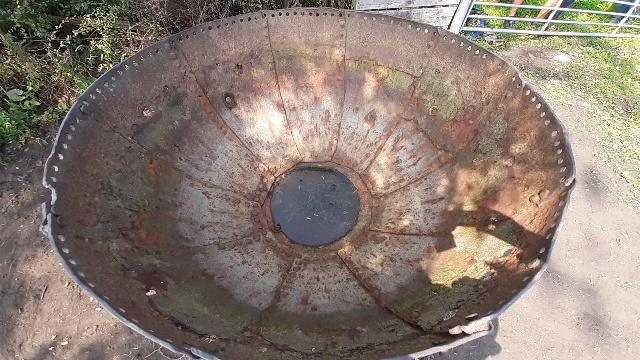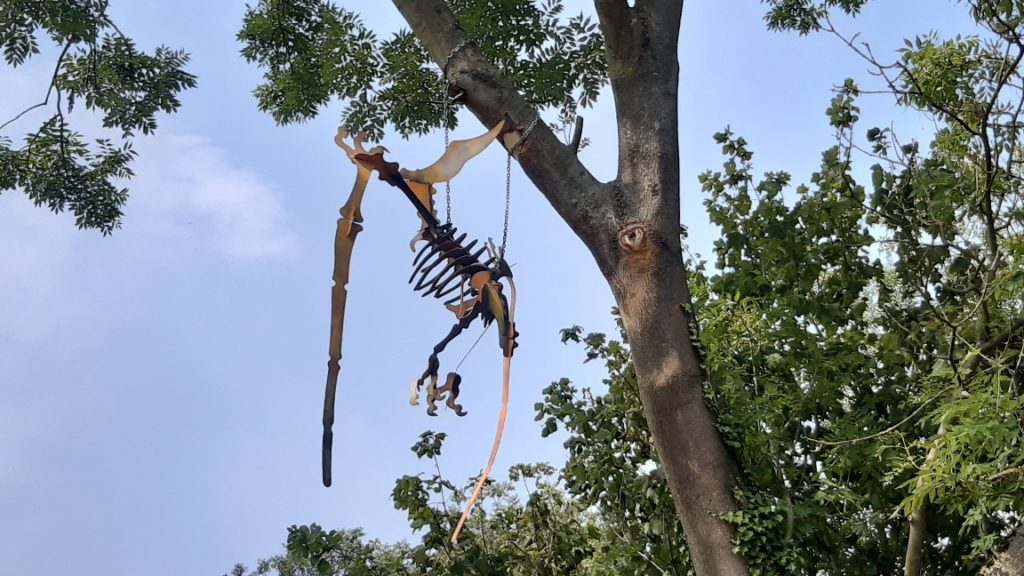It came about because Neil had been for a walk in the vicinity of Lumley Castle and noticed the end of an egg-ended boiler in use in a field for watering horses. Sending the picture to me, because of our work on the site of a boiler plant at Skelton Shaft, he suggested a limited CMHS visit to look for any further mining remains.

Four of us met yesterday in the car park beside the River Wear and the county cricket ground and a lengthy discussion ensued as to how long we would be there and therefore how much to feed into the parking machine, as you would expect from Yorkshire people.

Neil joined us with his friend John and off we went through the golf course and into the wooded valley behind Lumley Castle. Thanks to the Coal Authority website Neil had identified a number of staples, or shallow shafts, in the bottom of the valley surprisingly close to the river. Nearby, above the valley, is the site of Lumley Second Pit sunk in 1776 which intersected the Top Main Seam at a depth of 116 feet so if these staples were working the same seam they were probably less than 50 feet deep to reach it. And it suggests they were worked before that pit was sunk; it eventually reached a depth of 320 feet.
Wandering through the undergrowth filled valley looking for filled in pits was a struggle at times but Steve W. in his shorts waded manfully through the nettles. Eventually John spotted a fenced enclosure which turned out to be guarding a shaft of small diameter, unlined, and a few feet deep to a blockage; confirming that such shallow shafts did in fact exist.

After lunch beside the path in a pleasant spot we found our way to the northern edge of the wood to look for the track of a waggonway to the 9th Pit which was sunk in 1841 and reached a depth of 450 feet, although the waggonway was described as ‘Old’ by 1850. Its track across an open field to the north was just discernible. We followed its route to the south across the valley where it runs down a gradient past old stone quarries to a bridge over the river where a tunnel beneath it is also indicated. Although we noticed an old iron pipe running along the track it was the discovery of a stone sleeper in situ which was more interesting. Old waggonways had wooden rails but this relic suggested iron rails and a date in the first half of the nineteenth century.

After looking at the river bridge we looked for the second tunnel but nothing could be seen on the western side. However, Steve W. looked to the east and finding its portal ventured inside, possibly the first CMHS member to go underground since the start of lockdown! Lined with rough stonework and about 6 feet high the tunnel has been blocked at the west end. It seems to have been built for a path along the valley which has now disappeared.


From this point it is a steep climb up to the south out of the valley to the sites of Lumley Nos. 1 and 2 Pits. No.1 was sunk in 1776 and No.2 soon after, but both closed by 1811. No.3 was to the south and reopened in 1811 and eventually closed in 1924. The waggonway must have had a stationary engine to haul wagons up the rise and the OS 25 inch map shows an Old Engine alongside the route which probably did the job although the map also shows Black Row Engine to the east working the branches to these pits via Nicky Nack Bank. The sites of the 1 and 2 pits has subsequently been landscaped and we could find no traces of them at all.

We followed the road back down into the valley heading for the Lumley Forge Mill, but first had a look into a nearby field to see the end of an egg-ended boiler which is upturned and in use for watering horses. It was revealed to be 6 feet diameter and presumably came from a local pit. The four inquisitive heavy horses were a delight to see as well.



Near here above the valley was the settlement of Breckon Hill with a pub, a chapel and several cottages no doubt related to the Lumley Forge Mill in the valley below. Now the pub still remains and a cottage but through the middle of the place runs the A1 motorway on a viaduct over the valley. No remains are obvious of the mill which, according to the map, crushed charcoal and barley.

To reach the site of the mill in the bottom of the valley was problematic as we were above it so eventually we descended down the slope, some of us more quickly than intended while John and Steve managed to find the steps. We returned through the golf course along the river bank past masses of Himalayan Balsom (and Giant Hogweed suitably poisoned) to reach the start point on what had been a hot, humid, itchy, scratchy but very interesting day. Recorded score was Steve 4 wasp stings, and Simon 2 insect bites.
GRID REFERENCES.
Lumley 1st Pit at NZ 2954 5058
Lumley 2nd Pit at NZ 2950 5053
Lumley 9th Pit at NZ 2915 5171
Black Row Engine at NZ 3034 5049
Lumley Forge Mill at NZ 2998 5088
Information from the Durham Mining Museum website, National Library of Scotland website (maps), and “The Private Railways of County Durham” by Colin Mountford, pub. Industrial Railway Society 2004.

As children living at Tinkler Tce, Castle Dene during the 1970’s, we played in a tunnel in Woods behind the houses very like the one you described… calling it ‘The Bat Cave’.